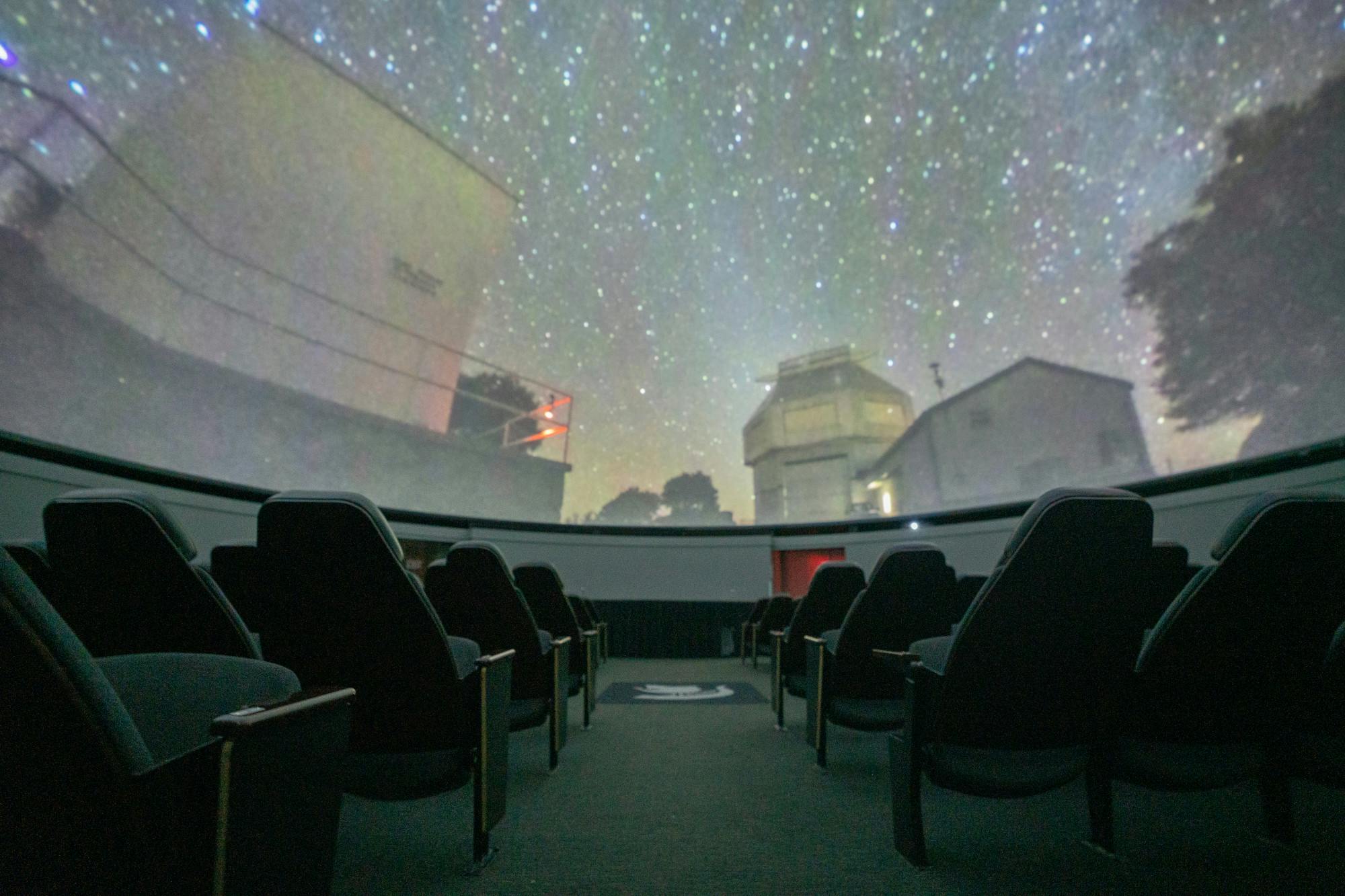The night sky is something that many have looked up at in admiration for years, but depending on location, many have noticed that the number of stars they can see has faltered.
Light pollution, which is any sort of extraneous light that is not directed down and illuminates the night sky, is the culprit behind this lack of visibility. Director of Abrams Planetarium Shannon Schmoll said that light pollution has gotten worse over the years, making the night sky appear less dense with stars.
“If we have a light on at night, a lot of times ... they’re shining upwards and away from the ground where we actually need it and that’ll drown out some of the fainter stars,” Schmoll said.
She described that due to light pollution, specific constellations or stars that typically can be seen by the naked eye, are no longer visible in most locations.
“When we go outside, for instance, in front of the planetarium, we have some lights right there and that makes it difficult for us to see some of the things we want to point out,” she said. “Similarly, there’s a lot of light out by the MSU observatory that comes from the nearby buildings. That is going to affect what we can see, so we are more limited to some of the brighter objects in the sky.”
According to Schmoll, lack of visibility in the night sky at Michigan State University is inevitable, because it is both a large campus and located near a major city.
Jason Blashka, coordinator at Fox Park Observatory in Eaton County, said he faces the same issue when it comes to photographing the night sky.
“We have to use special filters now to take those images otherwise, we can’t see what our target is or what we’re trying to do. And so it adds a lot of more time to our projects,” Blashka said.
Because of this rise in LED lighting, the planetarium's filter system is no longer as effective as it once was, he said.
“We’ve noticed a huge change since LED lighting has become more prominent … that makes a lot of the scientific study harder because LED lights shine in such a broader spectrum than like golden candescent lights,” Blaskha said. “There’s a huge GM factory on the westside of Lansing … when they switched that to LED lights, our sky got noticeably brighter to the east of the observatory, to the point where we don’t cut trees over there because there’s no point."
When it comes to light pollution, big cities like New York and Chicago are the worst while nature parks or less densely populated areas are the best, Schmoll said.
A light pollution map, which represents data collected from the Suomi National Polar-orbiting Partnership and Visible Infrared Imaging Radiometer Suite, showcases that cities in Michigan such as Detroit and Lansing have far worse levels of light pollution than cities in northern Michigan.
Blashka called these northern areas with minimal light pollution “pristine dark skies.” Many astronomers refer to northern Michigan as “Michigan's black hole,” as the region is much darker on the light pollution map compared to surrounding areas, he said.
In order to increase visibility of stars and decrease light pollution in an area, Schmoll said it's best to reduce the amount of lights one has. Another solution is shielded lights — lights that are covered at the top in order to reduce the amount that shines into the sky. Schmoll said shielded lights are also more energy efficient, since they require less energy to achieve sufficient brightness on a street or sidewalk.
When upgrading lighting, the MSU Infrastructure Planning and Facilities teams work to ensure that light on campus is facing downward to minimize light pollution, communications manager Fred Woodhams said in an email to The State News.
Blashka said Fox Park Planetarium has worked with a neighboring gas station to shield their lights in an effort to aid the observatories view. The park the planetarium is located in has also implemented a dark sky ordinance, which removes all lights.
Fox Park has also worked with Headlands International Dark Sky Park, a park outside Mackinaw City that remains completely dark to spread awareness about light pollution and the impact it has on wildlife.
“It is so much more than just pretty views of the night sky,” Blashka said.
Light pollution negatively impacts animals by disrupting circadian rhythms and migration, Schmoll said.
“Birds might see lights or reflections and go in the wrong direction," she said. "Sea turtles will see lights and go in the wrong direction."
Schmoll said the loss of night sky visibility is more than an aesthetic loss, but a cultural one as well.
“A lot of the stories in the constellations that we have, they are ancient at this point and we’ve lost a connection to that because we can’t always see that. It’s not just the astronomy and the science, it’s the cultural connection,” she said. "There’s health implications, there’s conservation implications as well … If you have your own house and you’re replacing lights, put those shielded lights on. That’s the first step that you can do."


